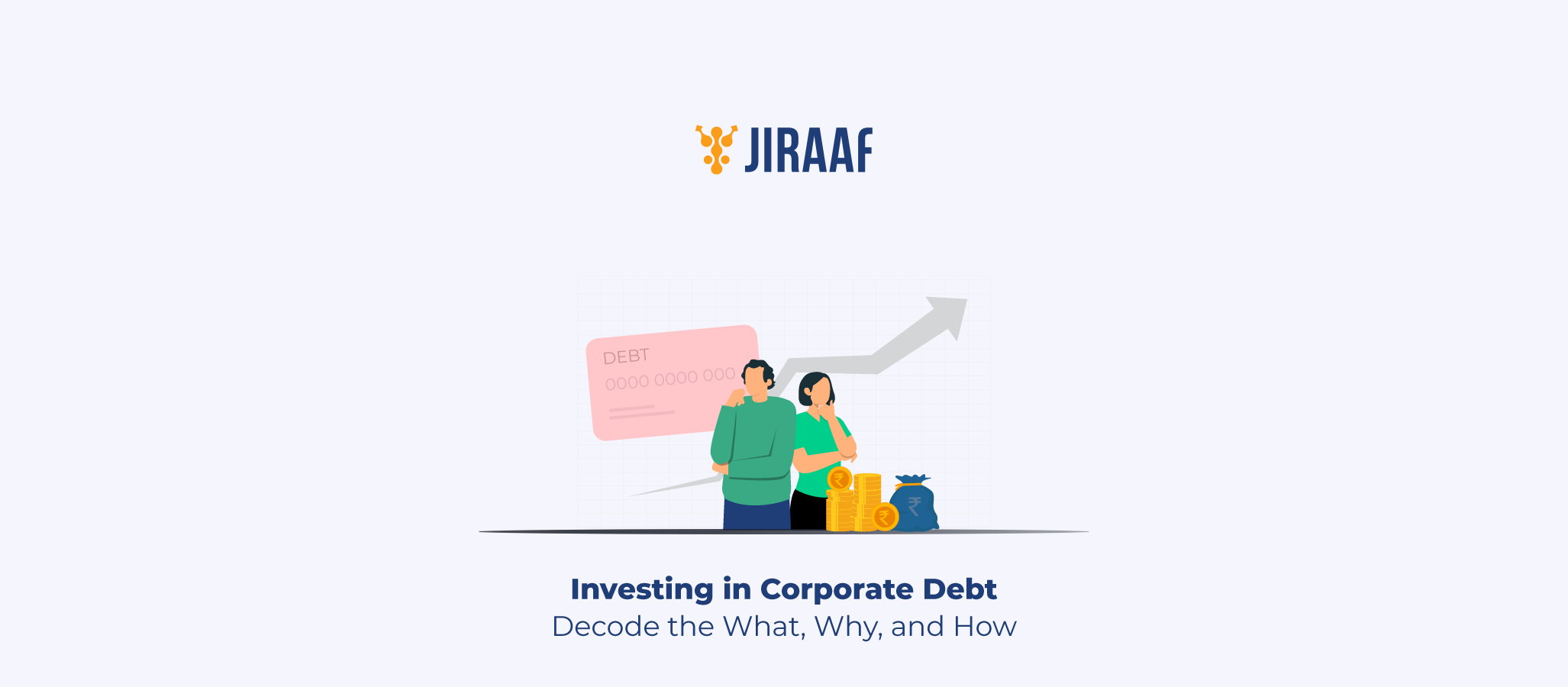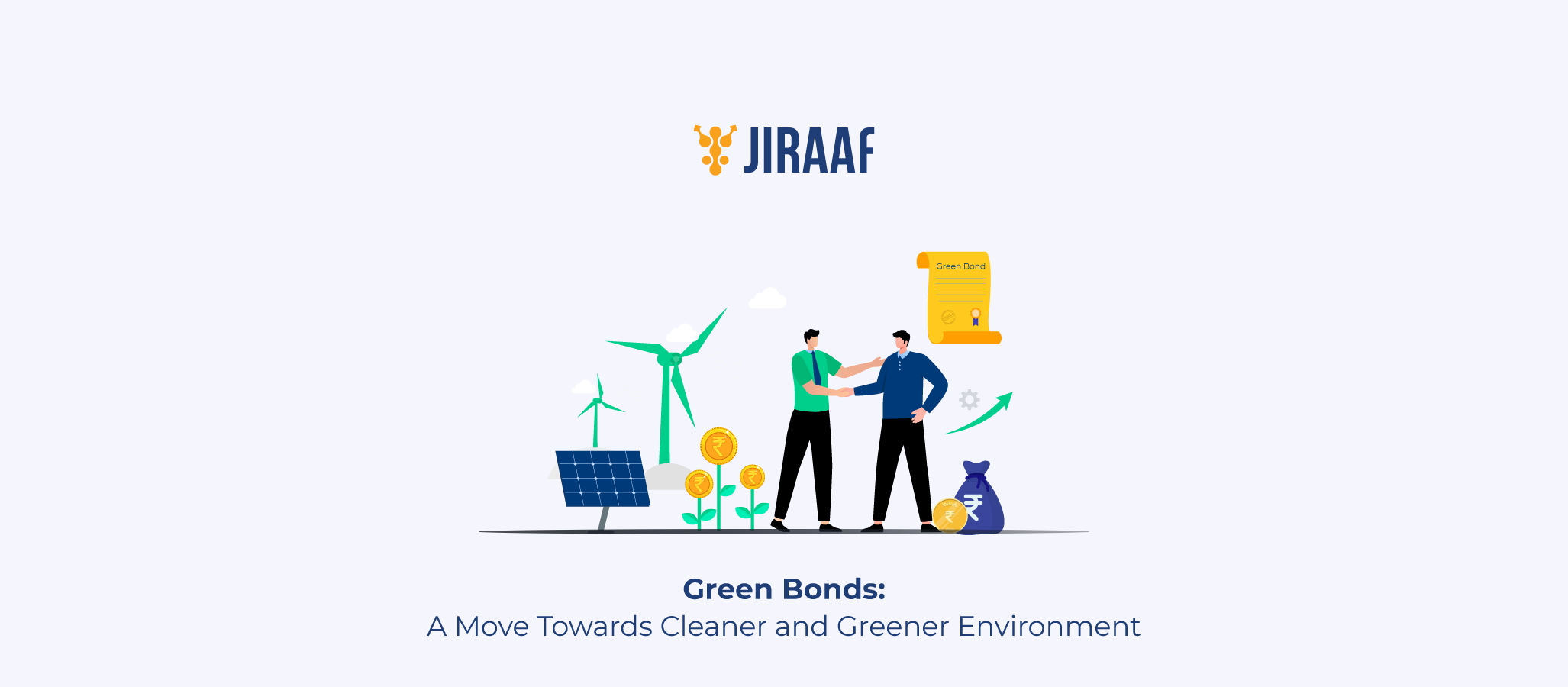For years, India’s equity market has been the go-to choice for investors seeking growth. However, there’s a significant number of investors who don’t just focus on growth alone; they crave stability without compromising on returns. These investors often settle for bank fixed deposits. Is that an appropriate fit for stable returns with decent yields or a compromise?
Corporate debts on the other hand come with the ability to provide predictable income, mitigate portfolio volatility, and unlock opportunities in sectors driving India’s growth story, like infrastructure, renewable energy, and technology. The corporate debt investment market stands at $2.69 trillion and yet it remains underutilized in India.
Why? Because many investors miss evaluating corporate debt.
What is Corporate Debt?
Corporate debt refers to the financial obligations that Indian companies incur to raise capital for various purposes, such as expansion, modernization, or meeting operational needs. It is one of the many ways for companies to raise money by borrowing directly from investors instead of banks.
When you invest in corporate debt, you’re lending capital to a business. In return, you receive periodic interest payments and the principal at maturity. This financing is used by businesses looking to scale without diluting equity ownership. It supports our country’s economic growth by providing companies with the necessary funds to execute large-scale projects.
For example, infrastructure companies rely heavily on corporate bonds to finance projects like highways, renewable energy installations, and urban development initiatives.
In India, corporate debt exists in two primary forms: publicly traded instruments like listed corporate bonds and privately placed debt offered to select investors. Unlike government securities or FDs, corporate debt gives you the potential to earn higher yields, but it also demands that you assess credit and liquidity risk closely.
Types of Corporate Debt Instruments
Companies use various types of corporate debt instruments to raise capital. Understanding those is crucial for making informed investment decisions.
List of Different Corporate Debt Instruments
- Corporate Bonds: These are long-term debt securities intended to raise capital, with a fixed coupon and maturity. You can choose between secured and unsecured options, and the risk and yield involved, as per your appetite.
- Debentures: Similar to bonds but often unsecured, debentures rely on the issuer’s creditworthiness for repayment. They are popular for their fixed income promise and are commonly used by companies with strong financials. You can choose between convertible and non-convertible debentures (NCDs), based on your preference—growth or stability.
- Commercial Papers: Short-term debt instruments used for immediate financing needs, commercial papers typically come with maturities from under a year to up to 270 days. These are ideal for companies needing quick access to funds for operational purposes, and for investors who seek predictable returns and liquidity with reasonable yield.
- Perpetual Bonds: These instruments have no pre-set maturity date. You receive regular interest payments indefinitely, but the issuer may have the option to call them back. These instruments suit investors with a strong risk appetite.
- Subordinated Debt: This type of investment sits lower in the repayment hierarchy. It pays higher interest but comes with increased risk, especially in times of issuer distress.
- Structured Obligations: These are more complex and often include call/put options, convertible features, or step-up coupons. If you’re comfortable with modelling risks, these can offer customizable returns.
Why Invest in Corporate Debt?
If you are looking to optimize your portfolio income and stability, investing in corporate debt is a fitting opportunity.
One of the biggest advantages is the steady stream of predictable and reliable income through fixed periodic interest payouts. This allows you to plan your cash flows effectively. Corporate bond funds have delivered an average return of about 9.88% per annum over the last year, with 3- and 5-year annualized returns around 7.4% and 7.0%, respectively.
High-yield corporate bonds in India, such as those issued by Poonawalla Fincorp or Tata Capital, etc., offer coupon rates ranging from 8% to over 10%, providing opportunities to enhance your fixed-income performance by selectively adding exposure to lower-rated issuers if you’re targeting better returns while maintaining a disciplined risk profile. Of course, that requires sharper credit assessment on your part, but the payoff can be substantial.
Beyond income, corporate debt investment provides you with capital protection as well. As a bondholder, you enjoy priority over equity holders during distress events. This structural seniority can play a crucial role in preserving value in downturns. At the portfolio level, corporate debt helps reduce volatility and smoothen return curves, especially when equity markets remain unpredictable.
Another reason for you to consider corporate debt is accessibility. Indian debt markets have evolved considerably, and you can now invest in them transparently and conveniently due to regulatory reforms, better disclosure norms, and digital platforms. You now have the tools to analyze credit quality, compare instruments, and build debt exposure that aligns with your exact risk-return expectations.
Risks in Corporate Debt Investment
While corporate debt offers you some solid advantages, it isn’t without its risks and understanding them helps you make better informed decisions.
Your biggest exposure lies in credit risk. If the issuing company fails to meet its interest or principal obligations, your invested capital is at stake. Credit ratings offer a credible point of reference, but they’re not enough. You need to dig deeper into the issuer’s financials, coverage ratios, and sector-specific risks.
Liquidity risk is another concern. Some corporate bonds, especially those privately placed or rated below AA, may not trade frequently, making it harder to exit without impacting their price. This becomes a challenge if you need to rebalance or raise funds quickly.
You might also need to account for the potential interest rate risk involved. If rates rise, the value of your fixed-rate bonds may drop, especially for longer-duration instruments. Holding to maturity mitigates this, but if you plan to sell before, you might need to incur losses.
Reinvestment risk is also something you need to watch out for with corporate debt. If you receive interest payments or maturity proceeds in a falling rate environment, reinvesting those proceeds at comparable yields may be difficult, impacting your overall returns. Lastly, covenant risk can also creep in when the bond’s terms are too lenient. Weak financial covenants reduce your protection as a lender and limit your ability to respond to distress situations.
So, does managing corporate debt risk mean avoiding investing in it altogether? No, instead, it means you need to approach corporate debt with discipline. Choose high-quality issuers, diversify your holdings across ratings and maturities, and align your exit horizon with the bond’s tenure. When done right, even the risks become manageable tools in your investing playbook.
How to Invest in Corporate Debt?
Due to recent advancements, you now have more ways than ever to invest in corporate debt, and your choice depends on how involved you want to be in managing your exposure.
If you prefer direct investment, you can subscribe to listed NCDs or buy corporate bonds from the secondary market. Some platforms also offer private placements for qualified investors, where you don’t just get curated deals with high yield but also higher risk and lower liquidity.
If you want professional fund management, consider debt mutual funds that focus on corporate bonds or credit risk strategies. These funds pool risk and give you diversification with expert analysis.
Or you can explore online bond platforms, which now simplify getting access to these instruments. You can filter options by yield, rating, tenure, and issuer type. This works well if you like selecting instruments yourself and want better access and transparency.
For larger portfolios, PMS and AIFs offer custom portfolios or thematic strategies, including distressed debt, structured credit, or laddered bond portfolios. These suit investors who are looking for institutional-grade execution.
Whichever route you take, make sure you understand the tax treatment, especially the difference between listed and unlisted instruments, and how it fits into your broader financial plan.
Key Considerations When Investing in Corporate Debt
As you invest in corporate debt, keep the following considerations in mind:
- Balance yield and risk smartly. High-yield corporate bonds offer attractive returns but come with higher default risk as well. Weigh these opportunities against your risk tolerance and recovery expectations to avoid overstretching your portfolio.
- Assess issuer strength thoroughly. Don’t stop at credit ratings—examine the issuer’s financial statements, cash flows, leverage, and repayment history. Strong fundamentals and consistent debt servicing are essential to protect your capital.
- Evaluate instrument structure carefully. Look into whether the bond is secured, includes callable or perpetual features, and how robust the covenants are. These structural aspects impact your actual risk exposure, liquidity, and control as a lender.
- Track macroeconomic and regulatory shifts. Interest rate trends, liquidity cycles, and sector-specific developments can directly affect your returns. Avoid long-duration bonds during rate hikes and steer clear of sectors under regulatory or financial stress.
- Monitor rating trajectories. A bond’s current rating is just one data point. Focus on the rating trend—downgrades or negative outlooks, even within the investment-grade space, often flag deeper credit risks.
- Diversify across instruments. Spread your exposure across different tenures, sectors, and credit qualities. Avoid over-concentration in any single issuer, industry, or rating bucket to reduce downside risk.
- Align investments with your liquidity needs. Illiquid bonds may offer better yields but limit your exit options. Only invest in such instruments if your holding period matches the bond’s maturity and you don’t need early access to capital.
Conclusion
As you explore investing in corporate debt in India, remember that this asset class offers a unique blend of income generation and diversification benefits. However, it’s crucial to navigate the corporate debt risk landscape effectively. As India moves towards becoming a $7-8 trillion economy, the role of corporate debt investment will only become more pivotal. Thus, positioning your portfolio to capitalize on this trend can be a savvy move for you.
You’re not just lending money when you invest in corporate debt; you’re taking a strategic position in a company’s capital stack. If done right, this can provide you with steady income, low correlation to equities, and targeted returns that outperform traditional fixed-income options.
Whether you’re capturing alpha from high-yield corporate bonds or locking into stable income from top-rated debt, investing in corporate debt can elevate your fixed-income strategy.
Discover fixed income investments with Jiraaf, a SEBI registered online bonds platform that educates and brings access to a wide array of bonds. Sign up today to explore diversified fixed income investment opportunities to support your goal-based wealth creation journey. Start investing!




